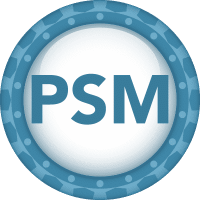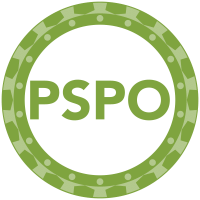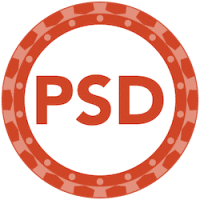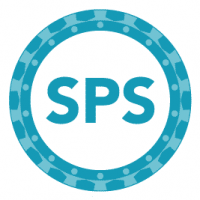Scrum Certification Practice Test 2025

Scrum 2025 is a framework for developing, delivering, and maintaining products in a complex environment using an agile mindset. It was originally developed for software development, but it has now been used to various industries such as research, sales, marketing, and advanced technologies. It is intended for teams of 10 or less workers that divide their work into goals that can be completed in time-boxed iterations, known as sprints, that last no more than one month and, in most cases, two weeks. Daily scrums, or time-boxed daily meetings of 15 minutes or fewer, are used by the Scrum Team to assess progress. The team holds two more meetings at the end of the sprint: the sprint review, which shows the team’s work to stakeholders and elicits comments, and the sprint retrospective, which allows the team to reflect and improve.
How to get CSM Certification?
Scrum necessitates the presence of a Scrum Master to foster an environment in which:
1. A Product Owner orders the work for a complex problem into a Product Backlog.
2. The Scrum Team turns a selection of the work into an Increment of value during a Sprint.
3. The Scrum Team and its stakeholders inspect the results and adjust for the next Sprint.
4. Repeat
Scrum Test
The CSM test, often known as the scrum test, is a step in becoming a certified ScrumMaster. As you may be aware, becoming a Scrum Master necessitates a thorough understanding of Scrum and how to use it to your organization’s benefit. This practice test for the Scrum Master certification assesses your knowledge of scrum and agile approaches. The questions also prepare you for the final CSM test questions by providing you a sense of what you’ll face on the certification exam.
Take the free CSM Practice Test Now!
Scrum Certification
The Scrum certification program has a straightforward structure: there are four certifications, two of which have two levels of difficulty, for a total of six credentials:
• Professional Scrum Master (PSM): A Scrum Master is someone who is well-versed in Scrum and Agile methods and values, and who is in charge of keeping all other stakeholders in a software development project on track and adhering to Scrum. PSM I (starting to intermediate level) and PSM II (advanced level) are the two levels of this certification.

• Professional Scrum Product Owner (PSPO): A Scrum Product Owner is the product’s owner or a major stakeholder in the product. He or she knows how to implement Scrum and Agile techniques, as well as the product’s business value and what drives it. PSPO I (starting to intermediate level) and PSPO II (advanced level) certifications are also available here.

• Professional Scrum Developer (PSD): PSD I is the name of the certification, however there isn’t a level II as of this writing. A PSD uses Scrum to create complex software, as per Agile principles such as Test-First Development and Continuous Integration (CI).

• Scaled Professional Scrum (SPS): The SPS, often known as the “exoskeleton of scaled Scrum,” focuses on the Nexus software and product development framework. An SPS is well-versed in Agile and Scrum, as well as how to apply it to various Scrum teams.

Candidates must pass a single exam for each certification (and level). The PSM I and II examinations will set you back $150 and $500, respectively, while the PSPO I and II exams will set you back $200 and $500. The PSD exam will set you back $200, while the SPS will set you back $250. Scrum certifications last a lifetime. To keep their certification status, holders do not need to take recertification exams or pay fees.

Scrum Master Responsibilities
Scrum is led by a scrum master, who is responsible for removing impediments to the team’s ability to meet product goals and deliverables. The scrum master isn’t your typical team leader or project manager; instead, he or she serves as a buffer between the team and any distracting influences. The scrum master ensures that the scrum framework is followed by coaching the team on scrum theory and ideas, facilitating critical sessions when necessary, and encouraging the team to grow and improve. To emphasize these two views, the role has also been referred to as a team facilitator or servant-leader.
A scrum master’s primary tasks include (but are not limited to):
• Helping the product owner maintain the product backlog in a way that ensures the needed work is well understood so the team can continually make forward progress
• Helping the team to determine the definition of done for the product, with input from key stakeholders
• Coaching the team, within the Scrum principles, in order to deliver high-quality features for its product
• Educating key stakeholders and the rest of the organization on Scrum (and possibly Agile) principles
• Helping the scrum team avoid or remove impediments to its progress, whether internal or external to the team
• Promoting self-organization and cross-functionality within the team
• Facilitating team events to ensure regular progress
The scrum master assists people and organizations in adopting empirical and lean thinking, discarding behind hopes for certainty and predictability in the process.
Scrum Values
Scrum is a feedback-driven empirical approach that is supported by the three pillars of transparency, inspection, and adaptability, as are all empirical process controls. Those responsible for the outcome should be able to see all work done within the Scrum framework, including the process, workflow, progress, and so on. Scrum teams must inspect the product being built and how well the team is working on a regular basis in order to make these things evident. The team can identify when their work deviates outside of permissible limitations by inspecting it frequently and adapting their approach or the product under development.
These three pillars necessitate team trust and openness, which Scrum’s five values facilitate:
1. Commitment: Every sprint, each team member makes a personal commitment to achieve the team’s objectives.
2. Courage: Members of the team recognize that they have the bravery to work through conflict and problems as a group in order to do the right thing.
3. Focus: Team members should focus solely on their team’s goals and the sprint backlog; no work should be done outside of their backlog.
4. Openness: Members of the team and their stakeholders have agreed to be open and honest about their work and any difficulties they encounter.
5. Respect: Members of the team expect one another to be technically competent and to operate with good intentions.
Scrum Opportunities
Searching for Scrum and related certifications on job boards like SimplyHired and Indeed yields 150 to 200 vacant openings around the United States. However, if you search for “Scrum Master,” the number of results rises to around 5,000. Software engineer, Agile coach, IT project manager, consultant, and web developer are all Scrum-related job titles, as well as the ever-popular Scrum Master.
Scrum Master annual salaries range from around $60,000 to a little more than $130,000, according to GlassDoor, with the national average compensation little under $92,000.
Scrum Guide PDF
Scrum is a project management paradigm that stresses collaboration, accountability, and incremental progress toward a well-defined goal. Scrum is a heuristic framework that is based on constant learning and adapting to changing circumstances. Preparation for this exam can be simple, but you must know what to concentrate on. If you’re looking for scrum master exam questions and answers PDF, safe 5.0 scrum master exam questions and answers PDF, scrum free PDF, scrum master exam questions and answers PDF, or new scrum guide 2022 PDF, you’ve come to the right place. To prepare, we recommend using Scrum questions and answers.
Scrum Questions and Answers
Scrum is an agile development approach based on iterative and incremental procedures that is used in the creation of software. Scrum is an agile framework that is designed to offer value to the client throughout the project’s development. It is adaptable, rapid, flexible, and effective.
A Scrum Master is a project manager who uses agile project management methodologies to guide a team through a project. To ensure a successful output, a Scrum Master fosters all communication and collaboration between leadership and team members.
A Scrum Master assists in the management of information sharing among team members but is not the team’s leader. Instead, they make it easier for the team to communicate and interact. Scrum masters help teams reach consensus on next actions, keep everyone on track by enforcing agreed-upon norms, and do everything they can to boost team productivity.
Scrum Masters require a combination of education, training, and certifications to develop the necessary abilities. A bachelor’s or master’s degree can be very helpful in preparing someone for a scrum master’s role.
Scrum is a methodology for addressing complex adaptive challenges while producing and delivering high-value solutions in a productive and creative manner.
Scrum is a framework for Agile software development.
The Certified ScrumMaster (CSM) is an entry-level credential meant to provide professionals new to Scrum with a foundation in the project management approach. Scrum ideals emphasize teamwork, responsibility, and incremental progress toward a well-defined goal, and the certification process helps candidates grasp them.
A Scrum Team is a group of people (usually between five and nine people) who work collaboratively to provide the product increments that are required. The Scrum framework encourages team members to communicate openly so that they can: A strong scrum software that enables scrum project management.
According to Glassdoor, a Scrum Master earns an average of $99,500 a year. The Certified Scrum Master (CSM) credential is an industry-recognized certification that verifies your competence to apply Scrum in the workplace.
The Certified Scrum Master assists the project team in implementing Scrum, which boosts the project’s chances of success. The Certified Scrum Master is fully versed in the Scrum application’s concepts, practices, and standards, and provides the business with a degree of expertise and experience that exceeds that of a traditional project manager.
A Scrum meeting is a gathering of important product stakeholders and participants with the purpose of receiving updates and information.
The Scrum methodology is a game-changing company approach that boosts productivity, office morale, and profits.
The Scrum Master is in charge of forming and onboarding project teams, as well as integrating them into the business and giving a clear product vision.
Scrum project management is perfect for teams who wish to work closely together and complete projects in tiny increments. Scrum, a subset of agile project management, is gaining popularity as a way for developing high-quality products in a variety of industries.
Agile is a project management philosophy that uses a core set of values or principles, while Scrum is a specific agile technique used to facilitate a project.
A scrum board, also known as a sprint board or scrum task board, is a tool used by agile teams to visualize the sprint backlog items and their progress.
A Scrum of Scrums is a virtual team made up of delegates who are connected to the original delivery teams via embedded linkages.
Passing one of the online Professional-Level Assessments with an 85 percent or better score is required to obtain a Professional Scrum certification.
Exhibits Lean-Agile leadership — Exhibits the behaviors of a Lean-Agile Leader with a Lean-Agile Mindset. An effective Scrum Master is a team-based servant leader who: Assists the team in embracing SAFe Core Values, adopting and applying SAFe Principles, and putting SAFe practices into practice.
An agile development team’s facilitator is a Scrum Master.
Product Owner, Scrum Master, and Development team are the three positions that make up the Scrum Team. Team of programmers. The Product Owner is responsible for the quality. They determine the product’s characteristics and maximize the return on investment Investing (ROI).
Scrum artifacts are tools for sharing critical project information with everyone participating in the Scrum project management process. They contribute to the Scrum values of transparency, inspection, and adaptation by reinforcing them.
Scrum.org defines a Scrum Team as “a framework within which people can address complex adaptive challenges while productively and creatively producing products of the highest possible value.”
The Scrum Master’s role includes coaching, advising, and mentoring all teams and departments at the corporate level.
The SAFe Scrum Master thinks of new ways to make the ceremonies more successful and productive. One of the key objectives of the SAFe Scrum Master is to build a highly motivated and self-organized team to produce high business value. The goal is to improve team relationships and performance.
Management’s role is to “provide insights and information on high-value product and system capabilities to the Product Owner.”
The first key feature of the Scrum process that must be apparent to people responsible for the outcome is transparency.
Exhibits Lean-Agile leadership — Exhibits the behaviors of a Lean-Agile Leader with a Lean-Agile Mindset. An effective Scrum Master is a team-based servant leader who: Assists the team in embracing SAFe Core Values, adopting and applying SAFe Principles, and putting SAFe practices into practice.
The purpose of the Scrum of Scrums meeting is to ensure that each team meets their sprint goals. In addition, all teams’ overall project goals are met. The agenda for the Scrum of Scrums is made up of status reports, debates, and problem resolution, with a focus on team coordination.
The Daily Scrum is a self-organization event for the Development Team. There is no designated leader because the team members must work as a single entity. Anyone on the team can start the meeting as long as they stay on track with the issues that need to be covered in the 15 minutes allotted.
Scrum is a framework that was developed as part of the Agile methodology.
Scrum framework is an agile management model for managing knowledge and activity, particularly in software development.
The Scrum process is frequently referred to as a “rinse and repeat” method. The four inspect & adapt events within the primary container event known as a sprint are the only ones that are genuinely repeated.
When a Scrum Master faces opposition from outside the development team, he or she should persevere and work diligently to defeat it. He or she should also create a working environment in which team members are willing to lend organic support to Scrum when needed.
One Scrum Master, one Product Owner, and developers make up the Scrum Team (anybody working on the sprint increment). There are no sub-teams or hierarchies in a Scrum Team. It is a group of professionals who work together to achieve one goal at a time, the Product Goal.
Only members of the Development Team are required to attend the Daily Scrum.
The Scrum Master does not give tasks.
By facilitating breakout groups focused on specific issues, acting as a subject matter expert and offering changes, mentoring the Release Train Engineer on event management, and estimating the work effort required to execute recommended improvements.
Scrum machines allow your rugby club’s forwards to practice the set piece over and again until it becomes second nature.
The entire number of Scrum team members multiplied by the number of team productive days equals team capacity.
Before beginning a scrum meeting, double-check that you’ve invited everyone who needs to be there. Scrum team members and a Scrum master are required to attend a daily scrum meeting. Make a schedule for your meeting. Every Scrum meeting has a set of questions to ask and a system for recording responses.
In India, you must attend a two-day training course in Bangalore led by a certified Scrum teacher to earn Scrum Master Certification.
Scrum Masters appear to need a thorough understanding of Scrum. Interviewers are also interested in hearing about your experience with Scrum. By presenting stories, you can connect your real-world experience to your Scrum basic knowledge. Describe how you used retrospectives to assist a team develop or how you helped a new Product Owner get started in their new role.
Yes, Scrum Master a good career path.
Transparency, Inspection, and Adaptation are the three Scrum pillars that support the empirical approach to process control.
Scrum Master is responsible for the administrative, coaching, and leadership functions that enable Scrum development. That implies he’ll spend the majority of his days: Facilitating (rather than participating in) the daily standup. Assisting the team in keeping their burndown chart up to date.
Scrum trainers are an independent resource of the Scrum team within an organization and can be directly sponsored by executives to enable Scrum organizational training from top to bottom. Alternatively, a Scrum trainer can be part of a Scrum team, work with executives to get the support they need, and consistently train other parts of the organization to fit into an agile Scrum team.
Cycle time refers to the period between when you begin working on a task and when it is completed. It says nothing about what happens from the start to the finish of the process. The Scrum calculation for cycle time is straightforward: Assume that you, as a Scrum Master, have determined that your team’s Cycle Time is excessive and that you wish to minimize it.
Is the world’s leading organization for Scrum and Agile certifications.
Iteration length is recommended by Scrum at 3-4 weeks, while eXtreme Programming and Feature-Driven Development recommend 1-2 weeks.
A Scrum Team should have six to ten people to be effective. Ensure that necessary skill sets are in place, yet that the group is small enough to collaborate easily.
By the end of each sprint, the team aims to have something valuable to display.
The Scrum Team is also known as the Development Team because they are in charge of developing the product, service, or other outcomes.
In order to see how far the project has progressed, the product owner should attend the daily scrum meeting.
One of the most widely used Agile approaches is Scrum. It’s a rapid, adaptable, and successful adaptive, iterative technique for delivering considerable value quickly and throughout a project. Scrum improves communication transparency and fosters a culture of joint accountability and continuous improvement.
The statement “We can’t perform Scrum without a Feature Team” is wrong. Feature Teams are obviously permitted in Scrum, but they are not required. Scrum simply necessitates the formation of a proper Scrum Team, as described by the Scrum Guide.
A Scrum team should have no more than 9 members. The recommended Scrum team size for major enterprise projects is seven individuals (product owner, scrum master, and 5 developers). Smaller projects usually include four people on the team (product owner, scrum master, and 2 developers).
The cost of training varies depending on the course you choose. Depending on your location and the time you select to take the course, it might cost anywhere from $500 to $2000.
Scrum is an agile framework that assists organizations in facilitating team cooperation and simplifying difficult projects by specifying what the Scrum team has to achieve, how they should do the tasks, but not in great detail.
Add a “Licenses & Certifications” section to your LinkedIn profile. Begin typing your certification name on the certification form. As you type, you’ll see certification options appear. Choose the type of certification you have. Type and select “Scrum Alliance” for the issuing organization.
Non-functional requirements can be made visible by creating a separate backlog item (such as a User Story or Technical Enabler) for them. This means that before a backlog item is declared “done,” the non-functional requirement must be built and tested.
Make use of a Scrum Board. Although a scrum board may not sound like a barrel of monkeys, it is a terrific way to properly organize a daily scrum meeting.